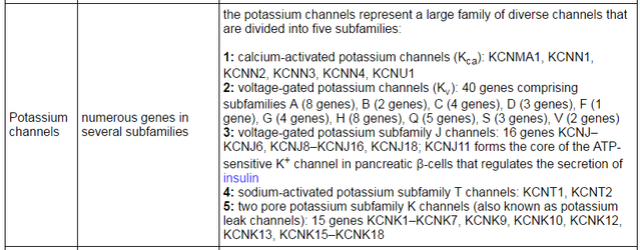Regulation of Potassium Homeostasis 1
http://reasonandscience.heavenforum.org/t2457-regulation-of-potassium-homeostasis
Potassium is the most abundant cation in the intracellular fluid, and maintaining the proper distribution of potassium across the cell membrane is critical for normal cell function. Potassium plays a key role in maintaining cell function. Almost all cells possess an Na+-K+-ATPase, which pumps Na+ ( Sodium ) out of the cell and K+ ( Potassium ) into the cell and leads to a K+ gradient across the cell membrane (K+in>K+out) that is partially responsible for maintaining the potential difference across the membrane. This potential difference is critical to the function of cells, particularly in excitable tissues, such as nerve and muscle. The body has developed numerous mechanisms for defense of serum K+. These mechanisms serve to maintain a proper distribution of K+ within the body as well as regulate the total body K+ content.
EVOLUTION OF CELLULARITY: ROLE OF THE SODIUM/POTASSIUM HOMEOSTASIS IN THE EMERGENCE OF ION-TIGHT CELL MEMBRANES, MEMBRANE BIOENERGETICS, AND G-PROTEIN COUPLED RECEPTORS 2
The cytoplasm of all living cells contains more potassium ions than sodium ions. In modern prokaryotic cells, the [K+]/[Na+ ] ratio > 1.0 is maintained by ion-tight cellular membranes and an arsenal of ion pumps. It is quite unlikely that the very first organisms could possess modern-type ion-tight membranes, not to mention a plethora of ion-pumping machines. It is far more likely that the monovalent ion content of the cytoplasm of the first organisms was in equilibrium with the environment. Prevalence of K+ ions over Na+ ions is crucial for the activity of numerous key enzymes that are found in all free-living organisms, including those components of the translation system that even preceded the Last Universal Cellular Ancestor (LUCA) .
Introduction into biological membranes

1. http://cjasn.asnjournals.org/content/early/2014/04/30/CJN.08580813.full.html
2. http://www.hou.usra.edu/meetings/abscicon2017/pdf/3586.pdf
http://reasonandscience.heavenforum.org/t2457-regulation-of-potassium-homeostasis
Potassium is the most abundant cation in the intracellular fluid, and maintaining the proper distribution of potassium across the cell membrane is critical for normal cell function. Potassium plays a key role in maintaining cell function. Almost all cells possess an Na+-K+-ATPase, which pumps Na+ ( Sodium ) out of the cell and K+ ( Potassium ) into the cell and leads to a K+ gradient across the cell membrane (K+in>K+out) that is partially responsible for maintaining the potential difference across the membrane. This potential difference is critical to the function of cells, particularly in excitable tissues, such as nerve and muscle. The body has developed numerous mechanisms for defense of serum K+. These mechanisms serve to maintain a proper distribution of K+ within the body as well as regulate the total body K+ content.
EVOLUTION OF CELLULARITY: ROLE OF THE SODIUM/POTASSIUM HOMEOSTASIS IN THE EMERGENCE OF ION-TIGHT CELL MEMBRANES, MEMBRANE BIOENERGETICS, AND G-PROTEIN COUPLED RECEPTORS 2
The cytoplasm of all living cells contains more potassium ions than sodium ions. In modern prokaryotic cells, the [K+]/[Na+ ] ratio > 1.0 is maintained by ion-tight cellular membranes and an arsenal of ion pumps. It is quite unlikely that the very first organisms could possess modern-type ion-tight membranes, not to mention a plethora of ion-pumping machines. It is far more likely that the monovalent ion content of the cytoplasm of the first organisms was in equilibrium with the environment. Prevalence of K+ ions over Na+ ions is crucial for the activity of numerous key enzymes that are found in all free-living organisms, including those components of the translation system that even preceded the Last Universal Cellular Ancestor (LUCA) .
Introduction into biological membranes

1. http://cjasn.asnjournals.org/content/early/2014/04/30/CJN.08580813.full.html
2. http://www.hou.usra.edu/meetings/abscicon2017/pdf/3586.pdf

